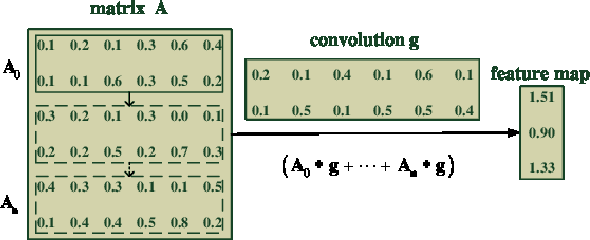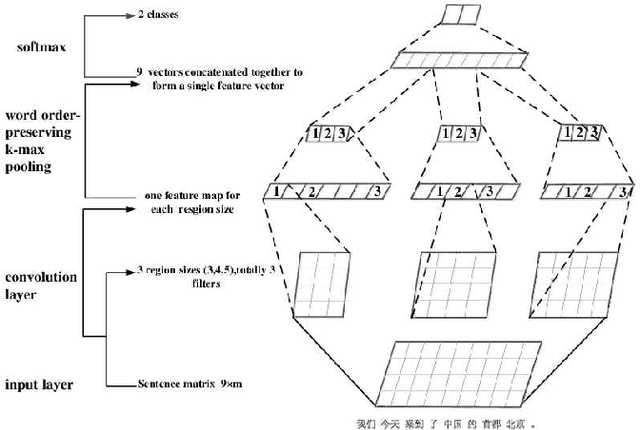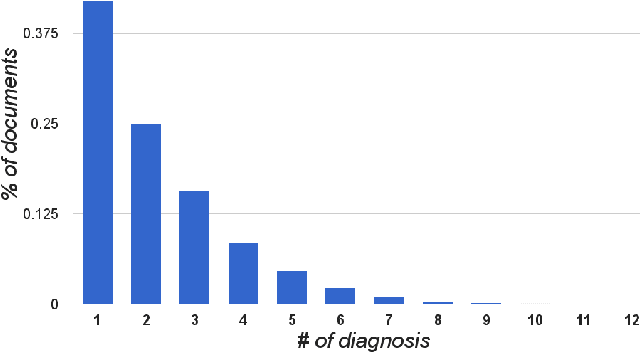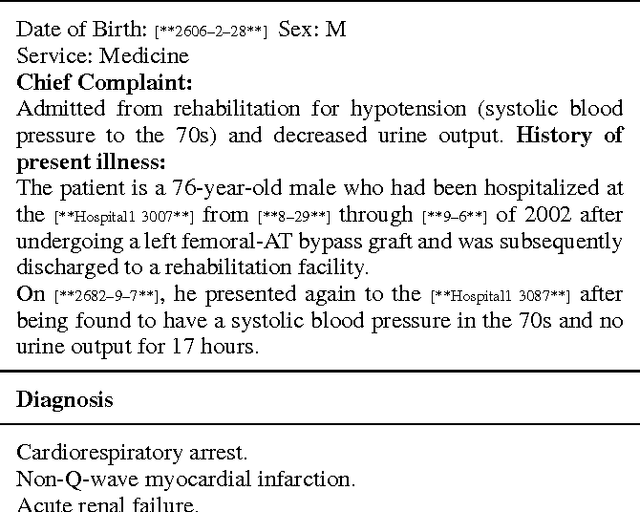Siyuan Zhao
SelectiveFinetuning: Enhancing Transfer Learning in Sleep Staging through Selective Domain Alignment
Jan 07, 2025Abstract:In practical sleep stage classification, a key challenge is the variability of EEG data across different subjects and environments. Differences in physiology, age, health status, and recording conditions can lead to domain shifts between data. These domain shifts often result in decreased model accuracy and reliability, particularly when the model is applied to new data with characteristics different from those it was originally trained on, which is a typical manifestation of negative transfer. To address this, we propose SelectiveFinetuning in this paper. Our method utilizes a pretrained Multi Resolution Convolutional Neural Network (MRCNN) to extract EEG features, capturing the distinctive characteristics of different sleep stages. To mitigate the effect of domain shifts, we introduce a domain aligning mechanism that employs Earth Mover Distance (EMD) to evaluate and select source domain data closely matching the target domain. By finetuning the model with selective source data, our SelectiveFinetuning enhances the model's performance on target domain that exhibits domain shifts compared to the data used for training. Experimental results show that our method outperforms existing baselines, offering greater robustness and adaptability in practical scenarios where data distributions are often unpredictable.
DiM-Gestor: Co-Speech Gesture Generation with Adaptive Layer Normalization Mamba-2
Nov 23, 2024Abstract:Speech-driven gesture generation using transformer-based generative models represents a rapidly advancing area within virtual human creation. However, existing models face significant challenges due to their quadratic time and space complexities, limiting scalability and efficiency. To address these limitations, we introduce DiM-Gestor, an innovative end-to-end generative model leveraging the Mamba-2 architecture. DiM-Gestor features a dual-component framework: (1) a fuzzy feature extractor and (2) a speech-to-gesture mapping module, both built on the Mamba-2. The fuzzy feature extractor, integrated with a Chinese Pre-trained Model and Mamba-2, autonomously extracts implicit, continuous speech features. These features are synthesized into a unified latent representation and then processed by the speech-to-gesture mapping module. This module employs an Adaptive Layer Normalization (AdaLN)-enhanced Mamba-2 mechanism to uniformly apply transformations across all sequence tokens. This enables precise modeling of the nuanced interplay between speech features and gesture dynamics. We utilize a diffusion model to train and infer diverse gesture outputs. Extensive subjective and objective evaluations conducted on the newly released Chinese Co-Speech Gestures dataset corroborate the efficacy of our proposed model. Compared with Transformer-based architecture, the assessments reveal that our approach delivers competitive results and significantly reduces memory usage, approximately 2.4 times, and enhances inference speeds by 2 to 4 times. Additionally, we released the CCG dataset, a Chinese Co-Speech Gestures dataset, comprising 15.97 hours (six styles across five scenarios) of 3D full-body skeleton gesture motion performed by professional Chinese TV broadcasters.
Speech-driven Personalized Gesture Synthetics: Harnessing Automatic Fuzzy Feature Inference
Mar 16, 2024Abstract:Speech-driven gesture generation is an emerging field within virtual human creation. However, a significant challenge lies in accurately determining and processing the multitude of input features (such as acoustic, semantic, emotional, personality, and even subtle unknown features). Traditional approaches, reliant on various explicit feature inputs and complex multimodal processing, constrain the expressiveness of resulting gestures and limit their applicability. To address these challenges, we present Persona-Gestor, a novel end-to-end generative model designed to generate highly personalized 3D full-body gestures solely relying on raw speech audio. The model combines a fuzzy feature extractor and a non-autoregressive Adaptive Layer Normalization (AdaLN) transformer diffusion architecture. The fuzzy feature extractor harnesses a fuzzy inference strategy that automatically infers implicit, continuous fuzzy features. These fuzzy features, represented as a unified latent feature, are fed into the AdaLN transformer. The AdaLN transformer introduces a conditional mechanism that applies a uniform function across all tokens, thereby effectively modeling the correlation between the fuzzy features and the gesture sequence. This module ensures a high level of gesture-speech synchronization while preserving naturalness. Finally, we employ the diffusion model to train and infer various gestures. Extensive subjective and objective evaluations on the Trinity, ZEGGS, and BEAT datasets confirm our model's superior performance to the current state-of-the-art approaches. Persona-Gestor improves the system's usability and generalization capabilities, setting a new benchmark in speech-driven gesture synthesis and broadening the horizon for virtual human technology. Supplementary videos and code can be accessed at https://zf223669.github.io/Diffmotion-v2-website/
Audio is all in one: speech-driven gesture synthetics using WavLM pre-trained model
Aug 14, 2023Abstract:The generation of co-speech gestures for digital humans is an emerging area in the field of virtual human creation. Prior research has made progress by using acoustic and semantic information as input and adopting classify method to identify the person's ID and emotion for driving co-speech gesture generation. However, this endeavour still faces significant challenges. These challenges go beyond the intricate interplay between co-speech gestures, speech acoustic, and semantics; they also encompass the complexities associated with personality, emotion, and other obscure but important factors. This paper introduces "diffmotion-v2," a speech-conditional diffusion-based and non-autoregressive transformer-based generative model with WavLM pre-trained model. It can produce individual and stylized full-body co-speech gestures only using raw speech audio, eliminating the need for complex multimodal processing and manually annotated. Firstly, considering that speech audio not only contains acoustic and semantic features but also conveys personality traits, emotions, and more subtle information related to accompanying gestures, we pioneer the adaptation of WavLM, a large-scale pre-trained model, to extract low-level and high-level audio information. Secondly, we introduce an adaptive layer norm architecture in the transformer-based layer to learn the relationship between speech information and accompanying gestures. Extensive subjective evaluation experiments are conducted on the Trinity, ZEGGS, and BEAT datasets to confirm the WavLM and the model's ability to synthesize natural co-speech gestures with various styles.
Towards Accurate Deceptive Opinion Spam Detection based on Word Order-preserving CNN
Mar 19, 2018



Abstract:Nowadays, deep learning has been widely used. In natural language learning, the analysis of complex semantics has been achieved because of its high degree of flexibility. The deceptive opinions detection is an important application area in deep learning model, and related mechanisms have been given attention and researched. On-line opinions are quite short, varied types and content. In order to effectively identify deceptive opinions, we need to comprehensively study the characteristics of deceptive opinions, and explore novel characteristics besides the textual semantics and emotional polarity that have been widely used in text analysis. The detection mechanism based on deep learning has better self-adaptability and can effectively identify all kinds of deceptive opinions. In this paper, we optimize the convolution neural network model by embedding the word order characteristics in its convolution layer and pooling layer, which makes convolution neural network more suitable for various text classification and deceptive opinions detection. The TensorFlow-based experiments demonstrate that the detection mechanism proposed in this paper achieve more accurate deceptive opinion detection results.
Condensed Memory Networks for Clinical Diagnostic Inferencing
Jan 03, 2017



Abstract:Diagnosis of a clinical condition is a challenging task, which often requires significant medical investigation. Previous work related to diagnostic inferencing problems mostly consider multivariate observational data (e.g. physiological signals, lab tests etc.). In contrast, we explore the problem using free-text medical notes recorded in an electronic health record (EHR). Complex tasks like these can benefit from structured knowledge bases, but those are not scalable. We instead exploit raw text from Wikipedia as a knowledge source. Memory networks have been demonstrated to be effective in tasks which require comprehension of free-form text. They use the final iteration of the learned representation to predict probable classes. We introduce condensed memory neural networks (C-MemNNs), a novel model with iterative condensation of memory representations that preserves the hierarchy of features in the memory. Experiments on the MIMIC-III dataset show that the proposed model outperforms other variants of memory networks to predict the most probable diagnoses given a complex clinical scenario.
 Add to Chrome
Add to Chrome Add to Firefox
Add to Firefox Add to Edge
Add to Edge